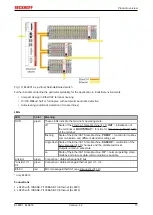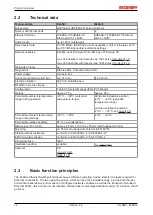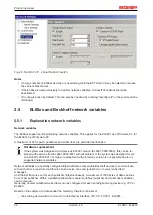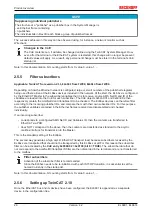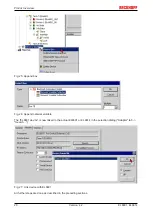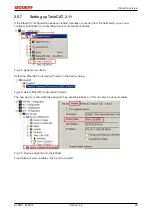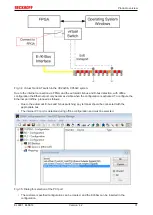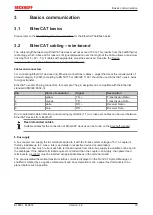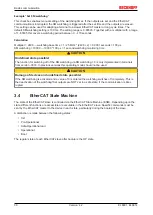
Product overview
EL6601, EL6614
22
Version: 4.2
Fig. 20: TwinCAT 2.11, virtual TwinCAT switch
Notes
• If a large number of EL66xx devices are used along the EtherCAT strand it may be helpful to increase
the value of
MaxFrames
• If the EL66xx is used exclusively to transfer network variables, ConnectToTcpStack should be
deactivated
• IP-routing is active by default. This can also be checked by entering "ipconfig /all" on the command line
(Windows)
2.5
EL66xx and Beckhoff network variables
2.5.1
Explanation network variables
Network variables
The EL66xx support sending/receiving network variables. This applies for the EL6601 as of Firmware 07, for
the EL6614 as of Firmware 03.
A maximum of 32 for each, publishers and subscriber, are permitted per EL66xx.
Hardware replacement
If the system was designed with a previous EL6601 version (EL6601-0000-0000), this can be re-
placed with versions from EL6601-0000-0017 without problem. If the system was designed for ver-
sion EL6601-0000-0017 or higher, replacement with a previous version is not possible due to un-
supported network variables.
Network variables are specially configured Ethernet frames that enable Beckhoff devices to communicate
with each other in real-time via Ethernet. Such device can send (publisher) or receive (subscriber)
messages.
An Ethernet frame is sent for each publisher (Ethernet-based). A maximum of 1500 bytes of data can thus
be sent per publisher. Within a publisher/subscriber several variables (publisher and subscriber variables)
can be created.
Generally, several publishers/subscribers can be configured for each sending/receiving device (e.g. IPC or
EL6601).
Based on the sample of a data sender the hierarchy therefore consists of
• the sending device with a minimum of one Ethernet interface: IPC, CX, FC9011, EL6601, ...






